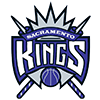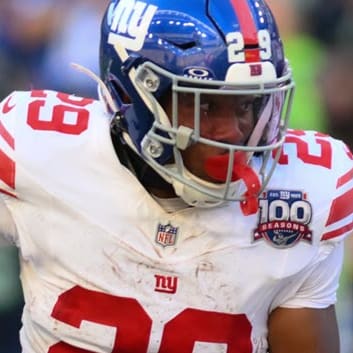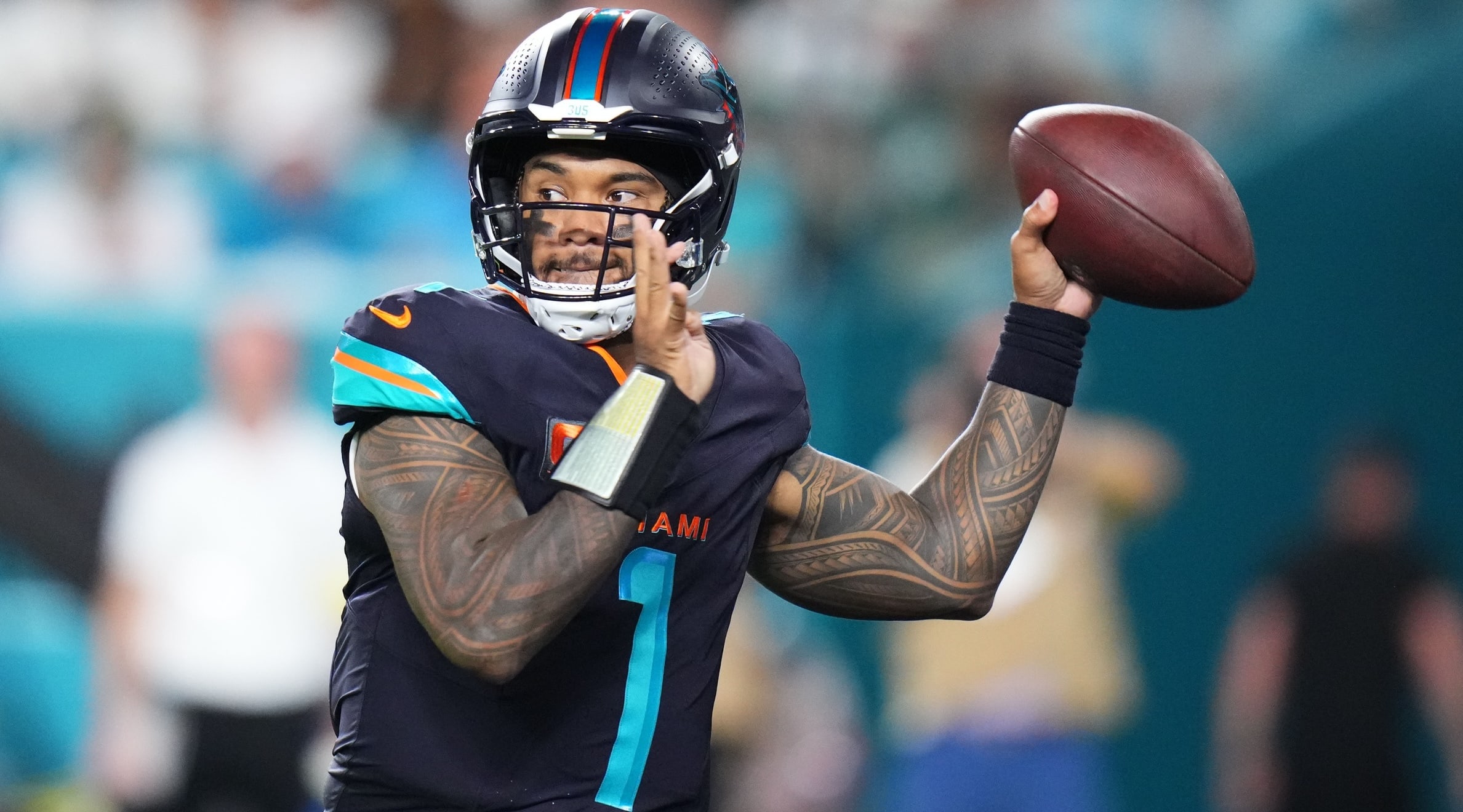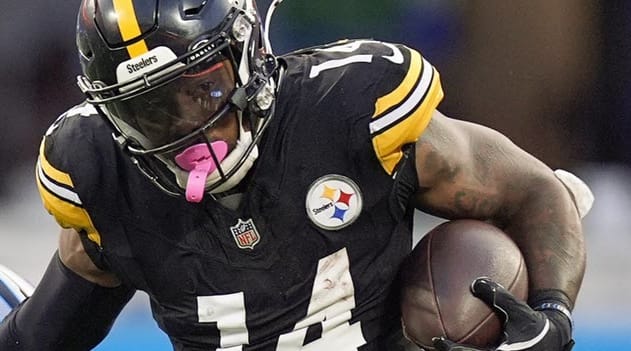This Job Battles entry will look at the Buffalo running backs, Minnesota backup running backs, and Detroit slot receivers.
Buffalo Running Backs
Devin Singletary (47.58 BB10, 53.53 NFFC)
Zack Moss (107.37 BB10, 118.53 NFFC)
T.J. Yeldon
Taiwan Jones
Christian Wade
Devin Singletary is of course the top runner in this backfield going into 2020. The former Florida Atlantic star earned a big role out of the gate, playing 73 snaps in two games before a hamstring injury knocked him out for the next four weeks (three games, one bye). After one game of easing back in on 22 snaps, Singletary went on to log at least 41 snaps in the next 10 games, and more than 50 snaps in six of them. By the year's end he was known as one of the league's more elusive runners, exploding from the handoff and changing direction with ease to gobble up space between the tackles. With the rushing threat and downfield range of Josh Allen in play under center, Singletary should continue to see winnable situations as a runner, and his track record of mammoth production in college (4,287 yards and 51 touchdowns rushing in 38 games) gives us reason to believe Singletary will keep running well for his own part.
The addition of third-round pick Zack Moss might present a limiting factor to Singletary's upside all the same. Singletary will need to hold on to the ball better after fumbling four times on 180 touches last year and might otherwise need to improve to safely hold off Moss for passing down functions. Singletary's 41 targets on 545 snaps yielded only 29 receptions for 194 yards and two touchdowns while he was credited with five drops and just 7.1 yards after the catch per catch, 30th percentile among running backs. In a Bills offense that completed 58.3 percent of its passes at 6.8 YPA, Singletary's 70.7 percent catch rate at 4.7 yards per target probably qualified as below-baseline.
Singletary was also conspicuously absent from scoring situations last year, his meager two rushing touchdowns versus 775 yards largely being the result of Frank Gore replacing him inside the 10-yard line. Whereas only three of Singletary's 151 carries occurred inside the 10-yard line last year, Gore saw 18 on his 166 attempts. Moss (5-9, 223) is much denser than Singletary at 5-8, 203, which makes him a reasonable plug-in candidate for Gore's former role.
Moss is a better prospect than David Montgomery was a year ago, and Montgomery went one pick before Singletary in the 2019 draft. As much as the Bears might want that pick back, the point is that Moss could be a very good player even if it isn't obvious yet. Like Singletary, Moss was an utterly dominant college workhorse back but one who tested poorly at the combine. Perhaps Moss can overcome his poor workout numbers just as Singletary did – Moss' college production and film only give us reason to expect as much. Even as a big back Moss was always a firecracker in the Utah offense, showing rare shiftiness and balance for big back built low to the ground. Over his last three years he turned 628 carries into 3,685 yards (5.9 YPC) and 36 touchdowns in 35 games. Concerningly for Singletary, Moss was a killer as a pass catcher, too, snagging 65 of 80 targets in that span for 681 yards (81.3 percent catch rate, 8.5 YPT). Moss had a knee bother him a bit at points in the last two years, so his durability is worth monitoring despite his strong prospect background.
T.J. Yeldon could fill some of the void of Gore's departure if Moss isn't up to the task. It's not clear how highly the Bills think of the former second-round pick and Alabama star, but the fact that he was often a healthy scratch behind Singletary and Gore last year can't be the greatest sign. Nor is it a great sign that the Bills would receiver $1.5 million in cap savings from his $1.9 million contract if they were to cut him.
Perhaps the Bills will keep Yeldon another year as the healthy-scratch emergency backup to Singletary and Moss. If so, the third game day active spot might instead go to Taiwan Jones. It never came together for Jones at running back, but the former prospect out of Eastern Washington puts his 4.33 jets to good use as a gunner on special teams, where Yeldon generally didn't contribute last year.
Christian Wade lurks in the background as a novelty prospect imported from British rugby. He showed explosiveness in the 2019 preseason and otherwise spent last year on the Buffalo practice squad, so he should be prepared to make a real run at a roster spot in 2020. At 29 years old, though, his upside is limited and the Bills are otherwise not financially committed to him.
Minnesota Backup Running Backs
Alexander Mattison (108.24 BB10, 94.07 NFFC)
Mike Boone (240.7 BB10, 285.07 NFFC)
Dalvin Cook is a holdout threat and even if not, his injury history regarding all of the shoulder, knee, and hamstring have been quite concerning. Fantasy owners are speculating substantially on the usage prospects of his backups as a result, and understandably so.
If Cook were to miss time, the heavy public favorite to replace him is Alexander Mattison, a third-round pick out of Boise State last year. At 5-11, 221 Mattison has the frame to withstand volume between the tackles, yet he has the solid pass-catching background necessary to function on passing downs as well. Before turning 21 in June of 2019, Mattison took on a big burden at Boise State the two years prior, accumulating 514 carries for 2,501 yards and 29 touchdowns in 27 games. The 4.9 yards per carry wasn't super impressive, but the figure would have been higher if not for the 29 touchdowns. He was also effective as a pass catcher, snagging 55 of 70 targets for 457 yards in those two years (78.6 percent catch rate, 6.5 YPT). Despite a concerning 4.67-second 40 at the combine, Mattison otherwise demonstrated adequate athleticism with a 35-inch vertical (60th percentile) and 127-inch broad jump (93rd percentile).
As much as Mattison can't imitate Cook's explosiveness, it's not the most meaningful criticism since almost no one can. It may be a matter of slight concern if Mike Boone makes the roster once again, though, because Boone is one of the few backs who can imitate top-level explosiveness. Boone (5-10, 206) logged a 4.44 40 at his Cincinnati pro day to go along with a 42-inch vertical and 139-inch broad jump – elite explosiveness testing. When Mattison suffered a high ankle sprain late last year it allowed Boone to get his foot into the door, running for 232 yards and three touchdowns on 41 carries in a three-week span, good for 5.7 yards per carry. Considering Mattison only ran for 462 yards and one touchdown on 100 carries, Mattison might not be able to close the door again on Boone in the event that Cook misses time.
The good news for Mattison is that even if he is sentenced to a workload-split with Boone, Boone is probably a bad pass catcher. Perhaps the two would split carries, but if there's a catch-up script Boone might head to the bench for good for the game in question. On 118 NFL snaps Boone has drawn seven targets, catching five for 18 yards and dropping two. Brutal. Mattison was good at catching passes at Boise and he was no different as a rookie last year, turning 12 targets into 10 receptions for 82 yards.
Detroit Slot Receivers
Danny Amendola (239.22 BB10, 275.6 NFFC)
Quintez Cephus
Geronimo Allison
Tom Kennedy
Victor Bolden
Danny Amendola will begin the year as Detroit's primary slot specialist in three-wide sets. Turning 35 in November and on a one-year contract, the Lions might look to get someone else reps at Amendola's expense over the course of the year, but they'll probably be dependent on him early on. He was still serviceable last year, his first working with Matthew Stafford. Amendola produced right around baseline in his 15 games, posting a 64.6 percent catch rate at 7.0 YPT in 15 games where the Lions as a whole completed 60.15 percent of their passes at 7.26 YPA. Although far from explosive, that level of efficiency is useful over a 97-target workload (656 snaps). There's a good chance Amendola offers some floor-setting utility in PPR leagues again this year, assuming you're content with the limited upside.
If Amendola misses time or plays poorly, though, then rookie fifth-round pick Quintez Cephus will likely receive consideration for snaps. Cephus (6-1, 202) was highly productive at Wisconsin but is likely a below average athlete, running a 4.73 40 at the combine and a 4.62 at the Wisconsin pro day – largely the same time given Wisconsin's fast track. Cephus might have just enough functional athleticism to get by anyway, and if he can it might lie more in his 38.5-inch vertical (84th percentile according to Mockdraftable) and 124-inch broad jump (74th percentile).
Cephus was consistently an above-baseline producer at Wisconsin otherwise, catching 76.9 percent of his targets at 12.9 YPT with six touchdowns as a true sophomore (age ~19.5) as the Badgers completed 64.6 percent of their passes at 9.1 YPA and 15 touchdowns in his nine active games before a leg injury ended his season. As a senior in 2019 (~21.5) he caught 59 of 94 targets for 901 yards and seven touchdowns (62.8 percent catch rate, 9.6 YPT) as Wisconsin completed 70.1 percent of its attempts at 8.0 YPA with 18 touchdowns. Cephus' senior season included a combined 10 catches for 179 yards on 19 targets in two games against Ohio State – a 52.6 percent catch rate at 9.4 YPT against a defense that allowed a 50.9 percent completion rate at 5.6 YPA. Former Buckeye and new teammate Jeff Okudah, selected third overall, called Cephus the best receiver he faced in college.
If Cephus can't earn a rookie-year role behind Amendola, then Geronimo Allison might be the backup plan. Allison (6-3, 196) is too skinny to play the slot and too slow (4.67 40) to play outside, so he basically needs to get by on his wiles wherever he plays. That might pass for serviceable depth, but the more snaps Allison plays, the worse the sign for the Lions offense.
If the Lions desire more explosive depth than what Allison can provide, then they might consider using a roster spot instead on Tom Kennedy or Victor Bolden. Bolden (5-8, 178) is a fourth-year undrafted journeyman out of Oregon State who offers some quickness but little else otherwise. Kennedy likely offers more upside as a second-year undrafted player out of Bryant, because at 5-10, 197 he at least offers above average athleticism with a 4.55 40, 37-inch vertical, 124-inch broad jump, and 10.74 agility score. Kennedy really is someone to monitor in deep dynasty leagues, because Marvin Jones is a free agent after this year and Amendola is somewhat likely in his last year with the team. Particularly if Cephus is a bust, Kennedy might offer them something.










































